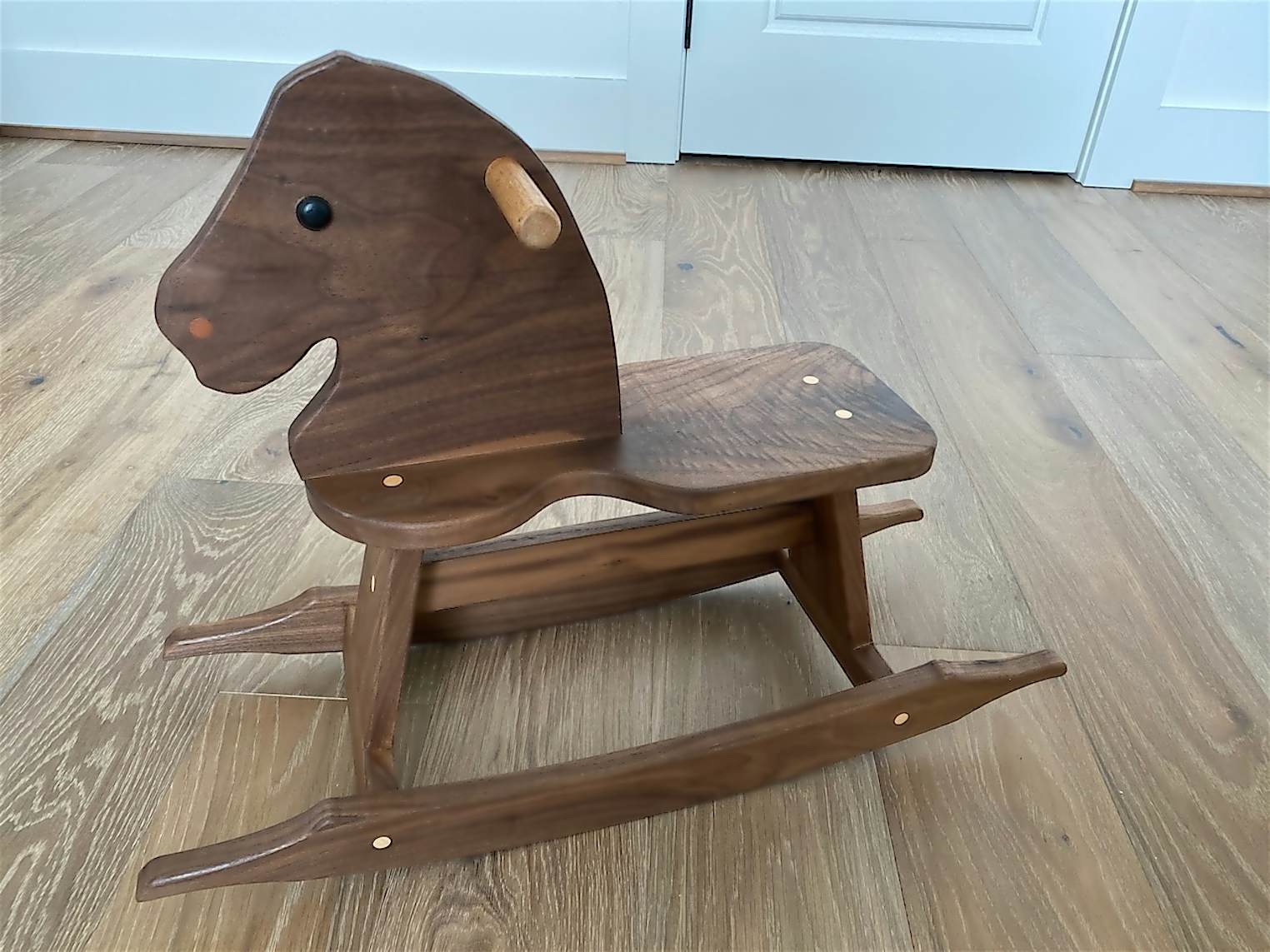Rocking Horse


This is a small rocking horse for a child. I've made several of these through the years as gifts. This is the first one I've done with Shaper. Works great for 1-3 year olds.
134
Toys
Files Included (4)
Horse Dimensions.svg
23 kBHorse Head.svg
9 kBHorse Leg Rocker.svg
2 kBHorse Seat.svg
6 kB
Materials
Material:
5' x 3/4 x 8.5" - rockers, head, body, and structure
12 3/8" plugs
8" 3/4" dowel - maple or walnut in this case
2 1/2" raised plugs - for the eyes - painted black
1/4" standard shaper bit
Screws
Tools
Shaper, Tablesaw / miter saw for lower structure, Drill, Spindle sander optional.
Instructions
Suggest you start with one long piece of wood and cut down to a more manageable size. If going with hardwood, consider one piece for color matching. If painting, it's less critical to have everything from the same board. All the outline cuts were done on the Shaper Workstation on 3/4 material with the Shaper supplied 1/4" bit, at successive 1/4" depth adjustments. But these are easy cuts and could be done with a tape board as well. A cleanup of the .02 offset was the final cut. Materials all held in place with double stick tape. All 1.5" screws were all countersunk to a depth of 1/4". Plugs glued in place and then cut with a no-kerf Japanese saw and sanded flush. I started with the head and rockers. The rockers are not mirrored front to back so you will need to reverse one rocker. I recommend countersinking one of the two rockers and then use that to drill through to the second rocker to mark the hole. You can also reverse the image and cut both with countersinks using the Origin if you like. Next I cut the seat. The four seat countersinks were done with a countersink drill during assembly since the spacing depends on the angles you place the support structure. Make each of the two-piece seat supports (6" wide and about 8" tall each), attach the legs and then place the seat over it and determine the angle cut under the seat for the splay, the middle brace angles and the location for the seat attachment screws. The file above with 'dimensions' will give you close approximations. Once the pieces are cut, I did a 1/8" roundover on all edges and a light sanding. The head is mortised 1/8 of an inch into the seat and attached with two screws from underneath. Adjust your mortise width with offsets to accommodate your material thickness if different than 3/4" The handle is cut and rounded over on a router table, slid in and then pinned with a walnut dowel glued in place. The completed seat height is about 9" in this model. The length is about 23" overall. Height is about 17" to the top of the head. Finish is two coats of wipe-on poly followed by a coat of wax after sanding to 600 grit. Happy trails!







